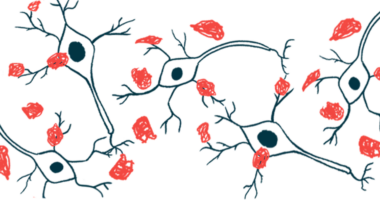Approved Treatments for Parkinson's Disease
Parkinson’s disease is a progressive neurodegenerative disorder that leads to the loss of motor control and various non-motor symptoms such as mood disorders, constipation, cognitive impairment, and problems with speech and swallowing.
Symptoms are primarily caused by a lack of a chemical called dopamine in the brain. Because there is currently no cure for Parkinson’s, available treatments are focused on increasing the levels of dopamine in the brains of patients, or on controlling the symptoms themselves.
Some of the therapies that may be prescribed for Parkinson’s patients are summarized below.
Anticholinergic Medications
Anticholinergic medications may be prescribed to help treat some Parkinson’s motor symptoms, such as tremors and rigidity. Anticholinergics may also help with dystonia associated with peak-dose and wearing-off effects of other Parkinson’s medications. They work by blocking the acetylcholine receptors on nerve cells without activating them. This helps reduce the effect of acetylcholine and balance the effect of decreased amounts of dopamine.
COMT Inhibitors
COMT (catechol-o-methyl transferase) inhibitors are a class of medications used in combination with levodopa to treat motor symptoms in Parkinson’s. COMT inhibitors work by blocking the action of enzymes that break down levodopa to extend the time of levodopa activity. Doctors may combine COMT inhibitors with monoamine oxidase B (MAO-B) inhibitors, which also extend the action of levodopa but work through a different mechanism.
Glutamate Antagonists
Low doses of glutamate antagonists have been shown to slow down the rate of nerve cell loss in the brain, thereby slowing down the progression of Parkinson’s. Glutamate antagonists work by inhibiting the activity of glutamate receptors in the brain. These receptors are broadly classified into two main subtypes: N-methyl-D-aspartate (NMDA) and 3-hydroxy-5-methyl-4-isoxazole propionic acid (AMPA) receptors.
MAO-B Inhibitors
Monoamine oxidase-B (MAO-B) is an enzyme responsible for the chemical breakdown of dopamine in the brain. MAO-B inhibitors act by inhibiting the activity of this enzyme and therefore slowing the breakdown of dopamine. MAO-B inhibitors can be given either as a monotherapy or they can be combined with carbidopa-levodopa therapy. The use of these medications can delay the reliance on levodopa.
Nourianz
Nourianz (istradefylline) is an add-on medication to treat off episodes in Parkinson’s disease. The oral therapy is approved to treat Parkinson’s patients who are on a carbidopa/levodopa treatment regimen.
Dopamine Agonists
In Parkinson’s disease, the dopamine-producing nerve cells degenerate and die, leading to reduced dopamine levels in the brain. Thus, body movements cannot be property regulated and motor function becomes impaired. This leads to the characteristic symptoms of Parkinson’s disease, such as tremors of hands, feet, or the entire body; slowness of movement, (bradykinesia), rigidity, and gait and balance problems.
Dopamine agonists mimic the effect of dopamine by binding to the dopamine receptors. Dopamine agonists are less potent than levodopa but are useful in treating Parkinson’s disease because they can overcome or delay a levodopa-induced side effect called dyskinesia (involuntary movement of the arms, legs, and other body parts), which can severely affect patients’ quality of life.
Several of the dopamine agonists available to treat Parkinson’s are summarized below.
Apokyn
Apokyn (apomorphine) is delivered via injection to treat loss of body movement control in patients with advanced Parkinson’s disease between doses of levodopa treatment.
Mirapex
Mirapex (pramipexole) is available as immediate release or extended release tablets. It is frequently taken alongside levodopa and can extend the length of time levodopa is active.
Neupro Patches
Neupro patches are transdermal patches approved for treating the symptoms of early and advanced stage Parkinson’s. They work by delivering rotigotine through the skin directly into the bloodstream.
Onapgo
Onapgo is a formulation of apomorphine, delivered as a continuous under-the-skin infusion, that’s intended to reduce motor symptom fluctuations in adults with advanced Parkinson’s disease.
Ropinirole
Ropinirole hydrochloride is an approved oral therapy used to ease symptoms in people with Parkinson’s disease. The therapy is available only as a generic medication, in either immediate-release or extended-release tablet formulations.
Levodopa and Derivatives
Levodopa is one of the main medications used to treat the symptoms of Parkinson’s disease, such as stiffness and slowness of movement. It’s naturally found in the body and is the precursor of dopamine, a neurotransmitter or signaling molecule that relays electric signals between nerve cells.
Levodopa can be used at all stages of Parkinson’s disease to replace the lost dopamine seen in these patients. It is available in many forms: as controlled or extended-release tablets, as dispersible tablets that can be mixed with water, and as an intestinal gel that is pumped via a tube surgically inserted into the intestine.
To avoid the breakdown of levodopa outside the brain, the treatment is usually given in combination with other medications such as Sinemet (carbidopa), Stalevo (entacapone, or Tasmar (tolcapone). These combination treatments allow more levodopa to reach the brain and help reduce its side effects, such as nausea and vomiting, by decreasing the required dose of medication.
Some of the available therapies that use levodopa are summarized below.
Crexont
Crexont is an extended-release oral formulation of carbidopa and levodopa intended to ease Parkinson’s symptoms. Its design allows it to be better absorbed and increase periods of time when symptoms are adequately controlled with fewer daily doses.
Duodopa/Duopa
Duodopa (Duopa in the U.S.) is a formulation of levodopa and carbidopa designed to treat motor fluctuations. It is administered via a tube surgically inserted into the intestines of people with advanced Parkinson’s.
Inbrija
Inbrija (CVT-301) is a dry powder inhaled formulation of levodopa approved to treat symptoms of Parkinson’s disease during “off” episodes. It is administered via a specialized hand-held inhaler.
Rytary
Rytary is a combination of carbidopa and levodopa contained in extended-release capsules, which provide a longer and more stable mode of action than regular carbidopa and levodopa combinations.
Sinemet
Sinomet is an oral therapy containing levodopa and carbidopa. It is available in three strengths with different concentrations of levodopa and carbidopa. A controlled-release formulation is also approved.
Stalevo
Stalevo is an oral therapy that contains a combination of three different drugs —carbidopa, levodopa, and entacapone — to treat Parkinson’s disease.
Vyalev
Vyalev is an approved injectable formulation of foscarbidopa and foslevidopa, prodrug versions of levodopa and carbidopa, used to reduce motor fluctuations in people with advanced Parkinson’s disease. It is administered as a continuous subcutaneous, or under-the-skin, infusion using a portable pump.
Exelon
Exelon (rivastigmine) is a therapy for mild to moderate dementia that is caused by Parkinson’s and Alzheimer’s diseases. It works to improve nerve cell function in the brain and belongs to a group of drugs called cholinesterase inhibitors.
Myobloc
Myobloc (rimabotulinumtoxinB) is a medication to treat abnormal head position and neck pain that occurs in adults with cervical dystonia. Myobloc injection can also treat chronic drooling, which can be an issue in Parkinson’s patients.
Northera
Northera (droxidopa) is an oral medicine used to treat sensations of dizziness, light-headedness, and a feeling of being on the verge of passing out or actually fainting, all of which can occur in Parkinson’s patients.
Nuedexta
Nuedexta (dextromethorphan HBr/quinidine sulfate) is an oral treatment used to treat a spontaneous laughing or crying condition called pseudobulbar affect that can occur in Parkinson’s patients.
Nuplazid
Nuplazid (pimavanserin) is an oral medication approved for the treatment of hallucinations and delusions associated with Parkinson’s disease.






